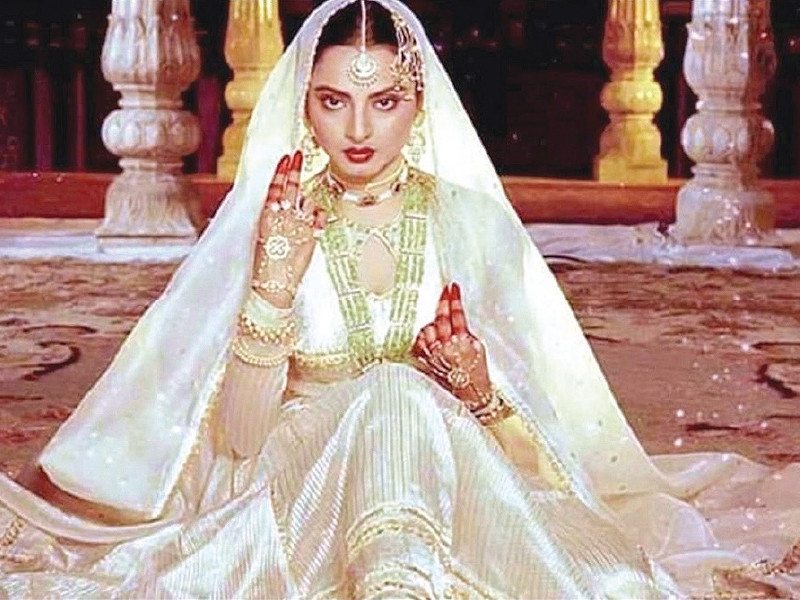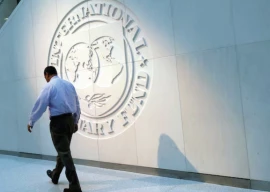
Director Sangeeta recently announced that she’s all set to weave her magic with an Umrao Jaan Ada remake. Sangeeta, who dominated Pakistani cinema in 1980s and 1990s alongside Shamim Ara as one of the few women in directing, says she’s aiming for a twenty-six episode Netflix series in a video making rounds on the internet.
“I am very excited for this one; we are putting our best foot forward to showcase that era aptly. The production team has put up big sets… We aim to release the twenty-six episode play on Netflix and hope to win an Oscar,” she says.
While the Society Girl filmmaker’s creative focus remains unclear to some — is it a film running the Academy’s race or a Netflix series — she’s ready to bring a fresh spin to a timeless courtesan, played by Meera opposite Moammar Rana. To truly appreciate this new endeavour, one must look back at the iconic remakes that have kept Umrao Jaan’s legacy alive over the years.
How it began
Once upon a time, in the heart of Lucknow, where the scent of kebabs mingled with the strains of ghazals, there was a courtesan whose beauty and grace could make poets weep and kings swoon. Her name was Umrao Jaan.
Her story began in 1905 when Mirza Hadi Ruswa penned Umrao Jaan Ada, a tale so rich with romance and tragedy that it became an instant classic. Umrao Jaan was no ordinary courtesan; she was a poetess, a dancer, and a woman whose heart bore the scars of a thousand betrayals yet beat with an undying passion for life.
The first cinematic adaptation of Umrao Jaan’s story came in 1958 with SM Yusuf’s Mehndi, starring Jayashree in the lead role. This black-and-white rendition, though lesser-known today, marked the beginning of Umrao Jaan’s journey from the pages of literature to the screen. The film attempted to capture the essence of Ruswa’s novel, presenting a visual interpretation of Umrao Jaan’s poignant and poetic life.
In 1972, the beloved courtesan debuted on the Pakistani silver screen with Hassan Tariq’s golden jubilee hit. The film, featuring the enchanting Rani and the dashing Shahid, captivated audiences and became an instant classic. Tariq had already charmed his fans with the blockbusters Kaneez and Behan Bhai.
His adaptation painted a poignant picture of the courtesan’s life, her trials, and her indomitable spirit, setting a high benchmark for future adaptations. With Umrao Jao, the filmmaker would continue his fascination with courtesans, preceded by Anjuman (1970) and Surraya Bhopali (1976).
Across the border in Bollywood, Muzaffar Ali would bring the story to life once again in 1981 with Rekha in the titular role. An undisputed queen of ’80s Bollywood, her portrayal of Umrao Jaan was so enchanting that audiences found themselves transported to the decadent courts of Lucknow, spellbound by her every gesture and word.
The film’s haunting melodies, like Dil Cheez Kya Hai and In Aankhon Ki Masti, echoed through time, cementing its place in Bollywood history. This adaptation remains the most celebrated, with Rekha’s performance becoming iconic and the music by Khayyam becoming legendary.
Fast forward to 2006 and director JP Dutta took on the formidable task of reimagining this classic for a new generation. Aishwarya Rai Bachchan stepped into the role of Umrao Jaan, bringing her own blend of beauty and elegance to the character.
This version, while lavish and visually stunning, evoked mixed reactions. Some cherished the homage to the original, while others felt it lacked the soul of its predecessor. The film’s grandeur and Aishwarya’s performance were praised, yet it struggled to match the emotional depth of the 1981 classic.



















COMMENTS
Comments are moderated and generally will be posted if they are on-topic and not abusive.
For more information, please see our Comments FAQ